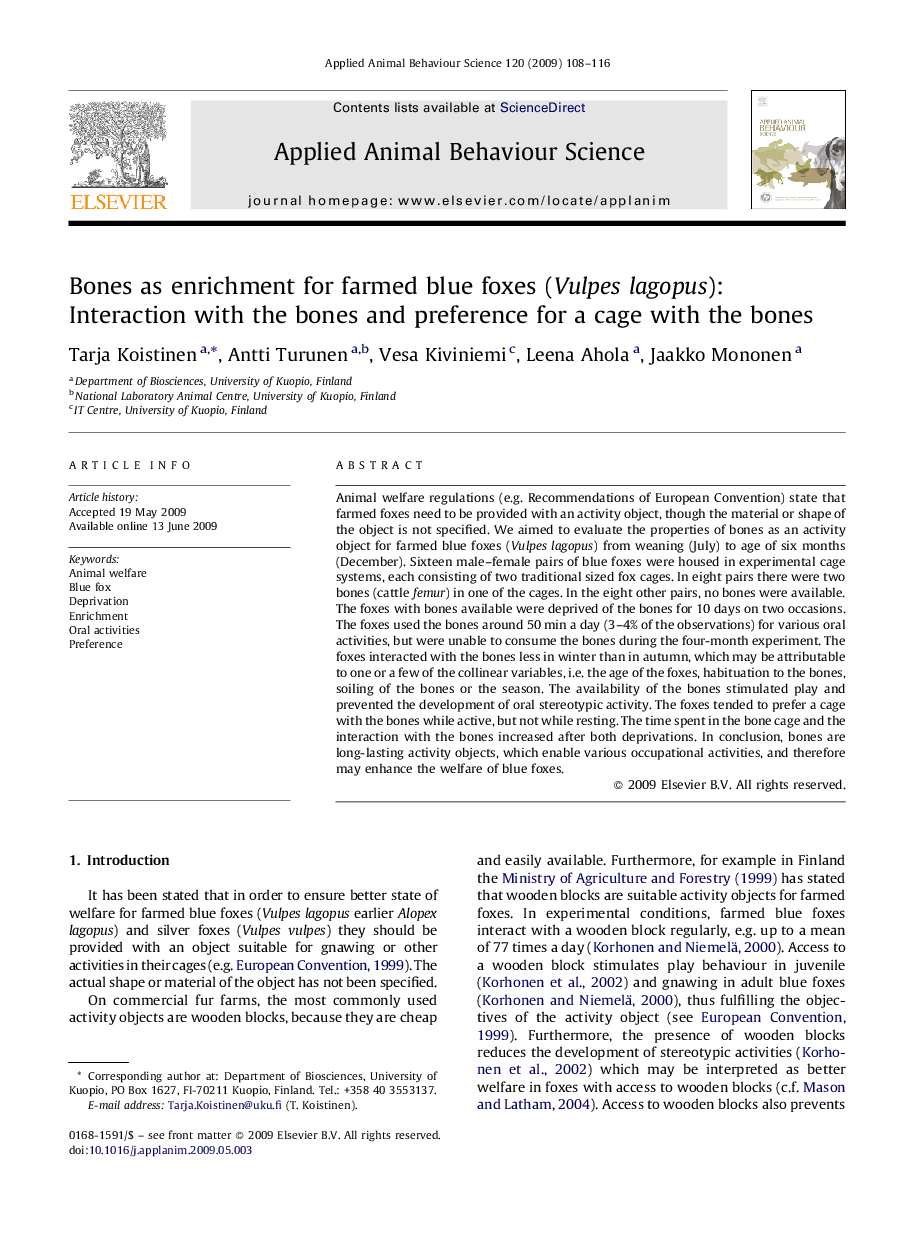| Article ID | Journal | Published Year | Pages | File Type |
|---|---|---|---|---|
| 4523543 | Applied Animal Behaviour Science | 2009 | 9 Pages |
Animal welfare regulations (e.g. Recommendations of European Convention) state that farmed foxes need to be provided with an activity object, though the material or shape of the object is not specified. We aimed to evaluate the properties of bones as an activity object for farmed blue foxes (Vulpes lagopus) from weaning (July) to age of six months (December). Sixteen male–female pairs of blue foxes were housed in experimental cage systems, each consisting of two traditional sized fox cages. In eight pairs there were two bones (cattle femur) in one of the cages. In the eight other pairs, no bones were available. The foxes with bones available were deprived of the bones for 10 days on two occasions. The foxes used the bones around 50 min a day (3–4% of the observations) for various oral activities, but were unable to consume the bones during the four-month experiment. The foxes interacted with the bones less in winter than in autumn, which may be attributable to one or a few of the collinear variables, i.e. the age of the foxes, habituation to the bones, soiling of the bones or the season. The availability of the bones stimulated play and prevented the development of oral stereotypic activity. The foxes tended to prefer a cage with the bones while active, but not while resting. The time spent in the bone cage and the interaction with the bones increased after both deprivations. In conclusion, bones are long-lasting activity objects, which enable various occupational activities, and therefore may enhance the welfare of blue foxes.
